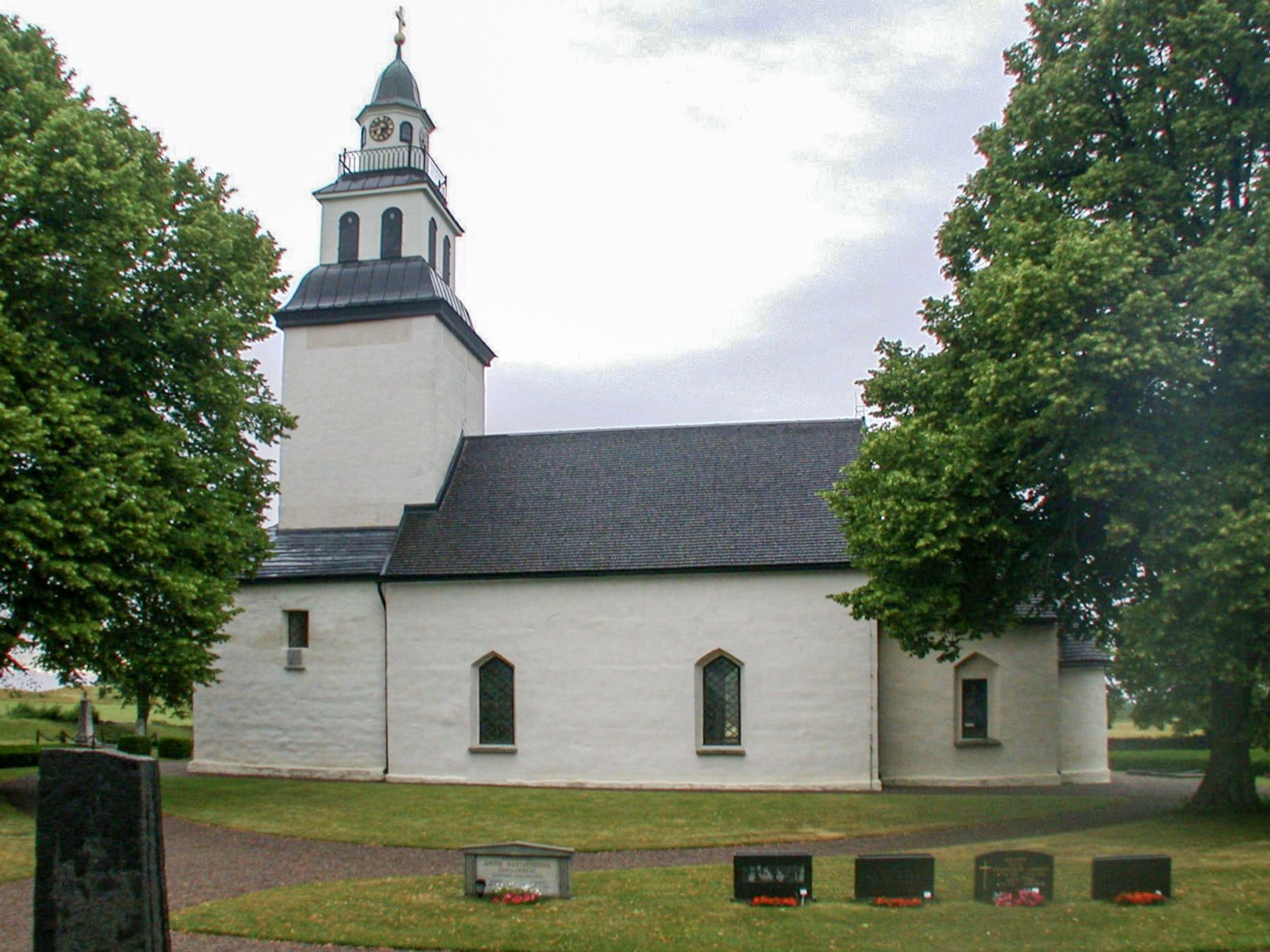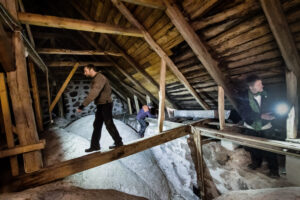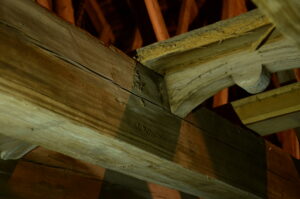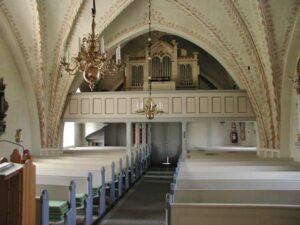
The Church of Sweden, through its parishes, manages around 3000 church buildings protected by the Heritage Act. The state compensates the Church of Sweden financially for managing this cultural heritage and the funds can partly be used for inventories or surveys that improve the conditions for preservation. Several studies of roof structures have been carried out by the dioceses, giving a new overview and substantially adding new knowledge of the topic. The Craft Laboratory at the University of Gothenburg has been commissioned by the Church of Sweden at the national level to compile the diocesan findings, which are the basis for this article.
Inventories and documentations of medieval roofs have been carried out in about half of the thirteen Swedish dioceses since 2010. There was solid knowledge and research on the richly preserved medieval church art and church buildings to base the studies on, so one could easily have thought that nothing new would emerge. These projects however, more than doubled the number of documented, medieval timber structures.

Figure 1
The investigations compiled more than six hundred, more or less, preserved timber structures in church buildings or belfries in Sweden. The project unearthed a large number of new examples thanks to thorough knowledge of traditional wooden building techniques and a systematic method for documentation. The approach was also more interdisciplinary compared to earlier work, involving craftsmen, antiquarians, art historians, archaeologists, architects, historians and engineers (figure 1). Alongside cultural history and building archeology, the relatively new field of craft science proved to be an important perspective in the research.
It has long been known that there are many well-preserved trusses [1] from the 12th century in Sweden. Compared with other countries in Western Europe, the number of early medieval trusses in Sweden is relatively large. It is mostly in the southern and central parts of the country that larger clusters of Romanesque stone churches with medieval roofs are preserved. The in-depth inventories make it clear that early medieval trusses in Sweden are variants of types that have been found spread over large parts of Europe during the same time period. It is stated in the survey that the oldest preserved roof constructions must be described and understood in an international context, just like the first stone churches.

Figure 2
The Swedish and Scandinavian roof constructions also have several features that are not otherwise found in Europe. The early medieval carving technique called sprättäljning (splash whittling) is characteristic of Scandinavian timber crafts until the 14th century and is abundant in both religious and profane constructions. The use of longitudinal guide beams that are found in some churches appear to stem from the stave churches (see figure 2). There is a small number of roofs where a decorated ridge is integrated into the trusses, which testifies to a mixture of both local and European building traditions. The cross-supported trusses in the western part of Sweden, are also unique to the area.
The timber crafts that are found in European architecture from the Gothic period, with elaborate trusses and vaulted ceilings, can be found on a larger scale in Sweden from the 14th and 15th centuries. An extensive rebuilding of churches took place , for example, aroundlake Mälaren in central Sweden and on the island Gotland during this period, meaning that old trusses were rebuilt or replaced, and new ones were built. Regional variations in findings from this period indicate a strong connection to socio-economic and climatic factors.

Interior of Hagebyhoga Church
The studies have revised the age of several detached belfries. During the inventory of belfries in the Skara diocese in west-central Sweden, no less than six belfries of the twenty-seven surveyed could be dated to the Middle Ages. The diocesan inventories of belfries has used dendrochronology [2] to date timber as early as the end of the 13th century.
For the Church of Sweden, it is of great importance that current knowledge is produced and made available to those who manage the church buildings, namely the parishes. The parishes in Sweden own a total of around 20 000 properties. Almost 3 400 of these are church buildings, and 2 944 of them are listed in a special church heritage category of protection in the Heritage Act.
The referenced inventories and studies have all been financed by the compensation the Church of Sweden annually receive from the state for managing this cultural heritage and keeping it accessible to all. Knowledge of the church heritage is therefore not just a church matter. The Church of Sweden collaborates with other parties, for instance the National Heritage Board and the Royal Swedish Academy of Letters, History and Antiquities, to fund and make available new knowledge to both researchers and the public. Attics and belfries are historical sources of general interest. It is possible to get a very personal encounter with medieval times in attics that have been closed for centuries. A deeper understanding of these values helps both to explain the strong heritage legislation and the necessity of the state compensation to the Church of Sweden.
Christina Persson and Markus Dahlberg, Heritage Support Unit, Church of Sweden, Uppsala, Sweden 2021
References
The regional documentation has been done on the initiative of the dioceses and many times through assignments to regional museums. The material is available as reports, for example:
Hedvig Bellberg & Bengt Bygdén: Medeltida kyrkotaklag. Strängnäs stift. Stockholms län. Inventering och dokumentation etapp 1 2013-14. https://www.svenskakyrkan.se/filer/Medeltida%20taklag%20i%20Stockholms%20län,%20etapp%201.pdf
The dioceses and regional museums have also in various ways made the results available in other media, for instance radio features or digital lectures, see for example the digital lecture from Örebro County Museum:
https://urplay.se/program/219972-ur-samtiden-lansmuseerna-berattar-medeltida-kyrkotaklag-i-narke
This article is based on the in-print survey by Robin Gullbrandsson, Mellan himmel och rum. En rapport om kunskapsläget för medeltida kyrktak i Sverige 2020, Rapport från Västergötlands museum & Hantverkslaboratoriet 2021.
Figures
Figure 1. Investigations in Tönnersjö Chuch, Halland, Photo by Jari Välitalo, Hallandsposten.
Figure 2. Guide beam in Hagebyhöga Church, Östergötland. Photo by Robin Gullbrandsson.
Footnote
[1] Truss, in engineering is a structural member usually fabricated from straight pieces of metal or timber to form a series of triangles lying in a single plane. (Encyclopedia Brittanica 2021)
[2] Dendrochronology, also called tree-ring dating, is the scientific discipline concerned with dating and interpreting past events, particularly paleoclimates and climatic trends, based on the analysis of tree rings.





Follow us: